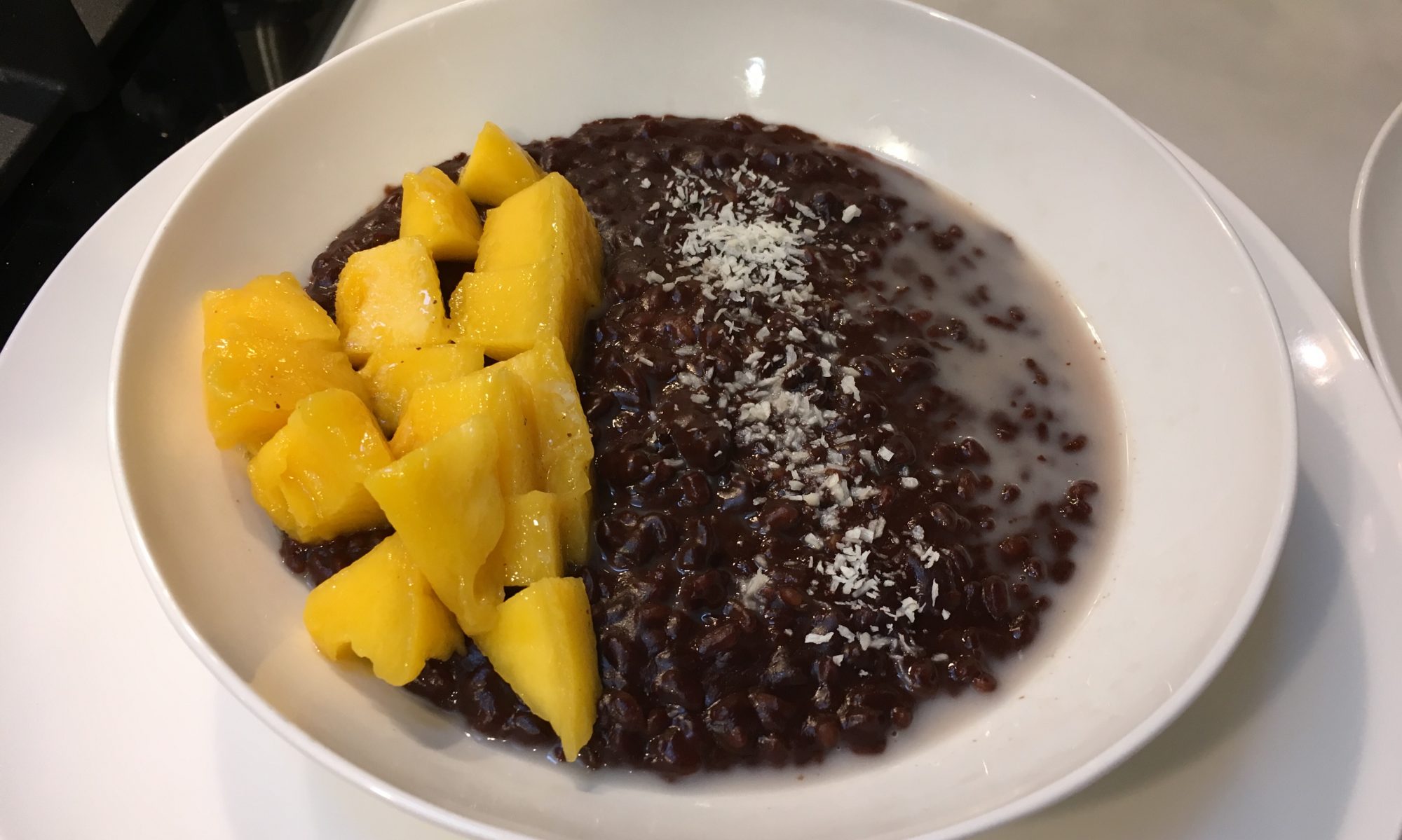Raw pumpkin and butternut squash seeds are quite unpleasant to eat without cooking. They are too chewy and hard to break down when biting on them, and you end up trying to swallow them whole. Not a good idea when they have a bit of a hard edge if they’re half chewed.
But once you cook them, it makes them nicely brittle and crispy, and it also brings out their deliciousness ?

Use a spoon to scoop the seeds out of a pumpkin half (I will call them pumpkins from now on, but it’s applicable to the squashes as well). The seeds are attached to the pumpkin with a sort of slimy pulp, and they will diabolically slip out of your fingers and fly off into the unknown (or into the most inconvenient and unreachable corner in your kitchen), which is why you need to use a spoon to try and contain their appetite for adventure.
You can leave them aside in a little container until you can pay attention to them (for example, you might want to cook the actual dish that uses the pumpkins).
There are two options for cooking them: either in a pan, or in the oven.
Roasting the pumpkin seeds in a pan

- Add some oil to a pan with lid, and turn to a high heat
- When the oil is hot, add the seeds, and place the lid on
- Reduce the heat to medium
- Stir frequently until the seeds are uniformly golden

Roasting the pumpkin seeds in the oven
- Turn the oven on, set to about 150ºC (fan)
- Add the seeds to an oven tray
- Add some oil on top and mix everything well together, e.g. using your hand
- When the oven is ready, pop the tray into the oven
- Monitor the seeds as they cook, and stir them halfway to make sure that they’re evenly golden
One thing that might happen if the oven is too hot is that the seeds start popping out, like popcorn! This is why I tend to cook these while the oven is warming up, and also why I prefer cooking them on a pan as it’s got a lid and it’s a bit more controllable. The results in terms of taste and appearance are very similar, although perhaps you get a bit more of ‘depth’ in the oven. But then you have to chase the popped seeds…
In both cases, you can also add salt or any other seasoning you like. I add a bit of salt and pepper at the beginning, and they’re really delicious either on their own or added to a salad.
If you don’t want to use oil or seasonings, perhaps you need to make sure to use proper non-stick equipment, but I haven’t tried this myself—I’m really partial to a good dash of oil.
Do wait until they’re cool to eat 😉
Other ways of consuming the seeds?
I have a hunch that the seeds could also be used to make pumpkin seed milk, but I haven’t tried this, as I suspect that I’d need lots more squashes to have enough seeds to make enough milk that it was worth the effort.
And maybe they could be roasted (without oil), and ground as “flour” too. What else can you think of?
Seeds as a snack in Spanish culture
There’s a big tradition of eating roasted or fried seeds in Spanish culture as a snack.
The most common snack are sunflower seeds, which are usually roasted with salt and their shell, and then you have to crack open the shell between your teeth before taking the seed out with your tongue—a bit like eating edamame, but requiring a higher ‘dexterity’ (tonguerity?) because the seeds are way smaller!
The shells are frequently just… thrown to the floor, when you’re in the streets. Kids and teenagers often eat them when they’re out in public squares; you can tell there has been a group of teenagers sitting on a bench by the amount of shells they left behind. It also used to be the case, before popcorn became popular, that you’d be walking over mounds of sunflower seeds on the cinema if yours wasn’t the first movie of the day. Crunch! Crunch! But that’s less frequent nowadays (I suppose to the cleaners’ great relief—it surely isn’t fun to sweep those away).
Pumpkin seeds are a bit more seasonal and old fashioned, and they were harder to find in kioskos (the Spanish newsagents). My grandparents used to scoop the seeds out of the big pumpkins they roasted, and placed them on sheets of newspaper so they’d dry out, before roasting them (or, knowing my grandfather, before trying to germinate some to grow pumpkin plants). I have this memory that one of those giant pumpkins would have so many seeds on them, they would fill half the kitchen table!
Other commonly consumed snacks (which aren’t strictly seeds, but legumes) are split white beans (habas in Spanish or fabes in Valencian), chickpeas, and even lentils—the latter are very popular in the area near Alcoi, Alicante.
I have seen the beans being sold as a snack in health shops in London already, so I suppose it’s just a matter of months until the chickpeas and lentils go through the Four Rs Process: Rediscovered, Rebranded, Repackaged and Reappropriated by the Hipster Healthy Food Brigade ?
Wait and see!

